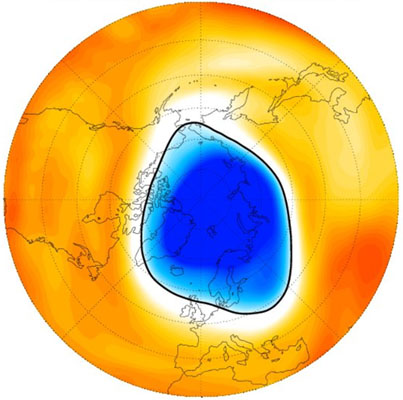Improved predictability of the polar vortex after sudden stratospheric warming
20.09.2023

Improved predictability of the polar vortex after sudden stratospheric warming
The polar vortex is a large-scale circulation that is active in the upper layers of the polar atmosphere in winter. Changes in its intensity can have an impact on the weather in mid-latitudes, such as Europe. This can, among other things, influence the likelihood for storm series or cold periods. A particularly robust downward impact on the troposphere is observed in the period following so-called sudden stratospheric warming (SSW) events. During these events, the polar vortex collapses abruptly and then recovers over several weeks. Such a collapse of the polar vortex typically suppresses tropospherically forced wave activity in the stratosphere and thereby reduces the dynamic variability of the polar vortex. This leads to a more predictable development of the circulation. Understanding and predicting the polar vortex then potentially allows more accurate predictions to be made for other aspects of atmospheric circulation. We quantified the strength and timing of this enhanced predictability using a large number of wintertime model forecasts. Our results show that errors in polar vortex strength predictions are reduced by up to 60% after SSWs and this enhancement lasts for several weeks.
Rupp, P., Spaeth, J., Garny, H., and Birner, T. (2023): Enhanced Polar Vortex Predictability Following Sudden Stratospheric Warming Events. Geophys. Res. Lett., 50(17), e2023GL104057, https://doi.org/10.1029/2023GL104057

